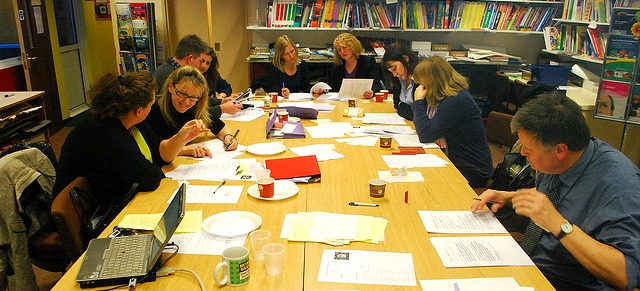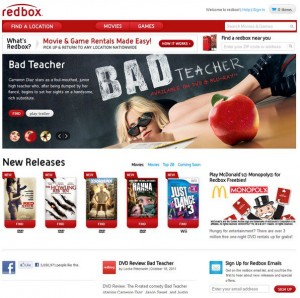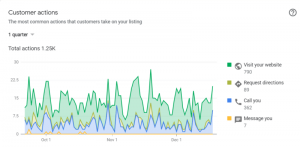Jonny Ross specialises in Social & Digital Marketing and Organic Search. He has a proven track record in the retail e-commerce field and now specialises in providing and enhancing social and digital services in the B2B and B2C sectors.
Trying to manage social media campaigns and marketing campaigns while also writing a blog and keeping your website up to date can be stressful. Especially when you have to produce fresh, new content for each platform. But creating great content doesn’t need to be a task. Planning your content months in advance is a great way to combat these struggles.
But how exactly do you go about planning content for a whole year?
Before we begin, some extremely important things to remember when attempting to plan your content for a whole year. It can feel like a daunting process but these top tips will make the process much easier:
- Don’t be afraid to take inspiration from anyone or anywhere. Keep a content folder where you can store articles, news stories, event invitations, anything that may provide you with inspiration in the near future. (For more on swipe files, click here)
- Think about guest blogging – are there websites that you write for that may be interested in writing for your website?
- The idea list you create isn’t definitive. Be flexible. Don’t be afraid to change things around or hold a specific piece until another date if that is more suitable.
- Put yourself in the position of the reader. Think about what type of content you find interesting or that would be beneficial to you.
- Read blogs. Take inspiration from a whole host of different sector blogs, from lifestyle to business. They can all provide you with insight in how to create the best content.
- Don’t forget to talk to your audience. Use call to actions at the end of your blog posts, encourage people to give feedback and engage with you!
Identify What Works
Take the time to look at your existing posts and see what has worked well and what has gained engagement with your audiences.
Once you have identified what has worked, create a list of the best blog post ideas and use this as a template when creating new ideas. Does your audience respond well to video blogs? Or do they seem to respond better to ‘How To’ articles? Do they appreciate opinion posts or do they prefer it when your offer advice?
It is always better to work from what you know your audience has responded well to in the past, as one of your main aims when creating content is to create engagement.
(To learn how to use Google Analytics to tell you what to write, click here)
Use Marketing & Content Persona
Identify your typical audience member for your different online platforms  . If you are able to identify your target audience, you are more likely to be able to create content that’s suitable for them.
. If you are able to identify your target audience, you are more likely to be able to create content that’s suitable for them.
Create a list of your different audiences on your different platforms to better target each to their needs.
Some Keywords
Many writers also suggest creating an extensive list of keywords for your business.
Keywords are a list of words or phrases that are related to your business, which can improve your businesses SEO and ensure that your content will be found on Google for those search terms.
If you have an idea for the type of content that you want to create and a list of 5-7 keywords that you are aiming to include in the content then this can make the writing process an extremely efficient one.
(To learn how to avoid keyword stuffing and write the way Google loves it, click here)
Content Calendar
Once you have accumulated some important information about the type of content that your business requires it is time to put all the info in one document.
You could just simply sit and write a long, long list of all the different types of content you are going to create over the next year but it is more efficient to use a content calendar (also known as an editorial calendar). A content calendar is the perfect way of planning and creating content.
Identify all activities and holidays for the year. Don’t be afraid to mark events you are unsure how to fit into your content marketing strategy.
Besides holidays here are the types of things you should add:
- School Holidays
- Seasonal Activities
- Business Events
- Conferences
You will notice certain events your content can be centered around. For example, if you have a conference one week, you may decide to provide your audience with a follow up of what happened and what the key points were. You can live tweet the event and use that content to power your other social media platforms.
Similarly, you may decide to provide your audience with some festive Christmas present ideas in the lead up to Christmas, including some of your own new product ranges in a blog that can be turned into several social media posts.
(For more on writing for holidays, click here. To learn how to tie your content to events, click here)
Titles
Once you feel you have marked as many events as you can, the next step is to think back to the lists that you created.
Try to devise several blog titles with a list of keywords attached for these specific events. (For more inspiration, see How to Easily Generate Over 100 Blog Titles on a Single Topic)
What would you like to be found on Google for? What types of keywords would your target audience search? Remember to think about your target audience and try and link your content back to these events wherever possible.
Don’t worry if you aren’t entirely sure; simply having a basic idea of the type of content you will be creating and a rough idea of what the content will be about is fantastic. The details are often confirmed closer to the time when you have a better understanding of the event and the products/services you have to offer.
Fill In The Gaps
Content calendars, once created, are not definite. It is more than acceptable to keep editing and changing your calendar as the year progresses. The main aim is to ensure you have a rough outline of where your content is going to come from and how you are going to create it.
When thinking of ideas, keep asking yourself lots of questions.
- What would you like more information on?
- What do you struggle to understand?
- What would be helpful to you?
- Have you ever been given a great piece of advice that your audience would appreciate?
- What is expected to happen in your industry in the coming year?
- Who is a good match for this piece?
Asking yourself questions is a great way to devise content and to ensure it is suitable for your target audience.
Remember to vary your types of content; from advice posts, to how to posts, to opinion posts, to industry events, to industry news. It is important to keep in mind that there are many different types of content that you can produce and often the most creative is the best received.
Social Planning
Also, remember to keep a space on your content calendar for your social media platforms. It’s easy to think about content in terms of blogs or articles but once you post them you should also share them on your other online platforms. A good way to plan this is to add a column next to your content ideas for your social media platforms. Your blog should form the basis of your social media campaign, so remember, one blog can be turned into a plethora of content to power your social media accounts.
One blog can be turned into:
- A Facebook post
- Several Twitter questions (especially if it is a step-by-step blog, each step can be posted daily across a week)
- A LinkedIn debate
- Or even a Pinterest image
Often, because social media platforms are restrictive with how much content you are able to post, this makes the process of devising content for your social media platforms much easier.
Pick out the key points of your blog or article, or simply post the title followed by a link to your content. There are many techniques that can be used to help save you precious characters, one very simple one is using a bitly link to your blog. Just remember, posting a link to your blog is crucial, it not only powers your social media content but can help drive traffic to your website!
Now read: 5 Techniques for Generating Content Ideas
How To Plan Content For The Year
The post How To Plan Content For The Year appeared first on Search Engine People Blog.
(324)
Report Post








